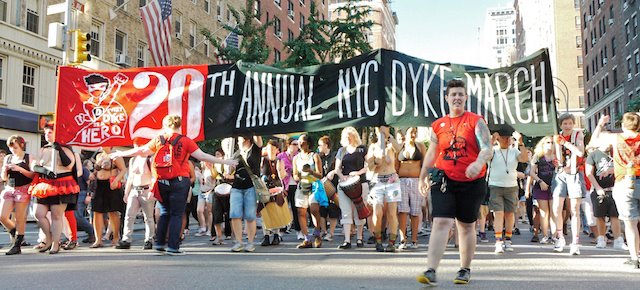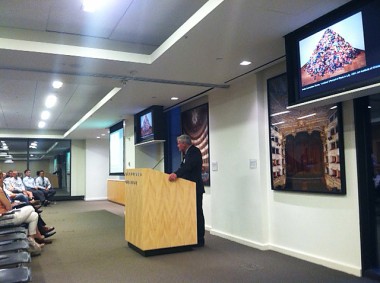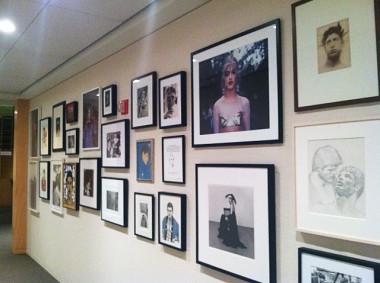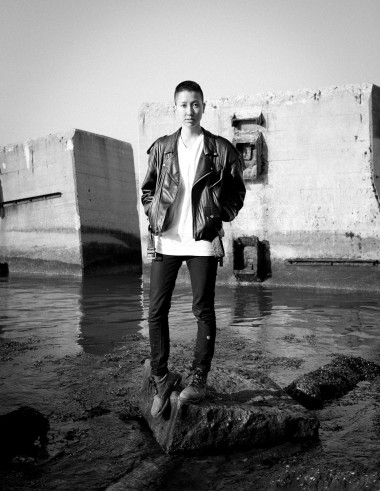Sarah, 19, Brooklyn, NY
In Japan, if you have tattoos you’re in the mafia. When I saw my grandmother in Japan I had to cover mine up because she’d reject me as part of the family. I also couldn’t tell my grandmother I was gay. Having tattoos and being gay and going to art school? She’d be like, “What are you doing with your life?”
I’m half Japanese and half white. When I’m in America I feel more Japanese, but when I go to Japan I feel really white. It’s strange because I don’t really have a home. My mom has lived in America for 30 years but says she views her time here as an extended vacation. I asked her if she wants to move back to Japan, but she said she’s too old at this point. She’s basically cut off ties with my dad, so I told her she should do what she wants.
I was born and raised in Minnesota, but I didn’t really speak English until I was five. Now English is my primary language. I think in English. I dream in English. My Japanese is slowly fading.
My father doesn’t speak Japanese and my mom’s English is pretty bad. Growing up, I’d talk to my mother in Japanese and my father in English. We were rarely able to communicate as a group.
I’m really tight with my mom, and she’s awesome. Now I don’t really talk to my dad. His personality and my personality don’t get along well. I haven’t talked to my dad about being gay because we don’t talk, but I think he knows.
My mom knows and she understands and is awesome. In emails she told me, “I accept who you are, blah blah blah.” But a month ago she asked me, “Are you having gender troubles? Do you want to convert genders? Is it because of your father? Do you want to be a man?” And I told her, “It’s okay, I like being a girl, relax.” I had to calm her down a little bit.
I don’t think I officially ever came out. It was more of a gradual process. Straight kids don’t have to announce their sexuality, so I don’t think I should have to either. My junior year of high school I went to Oxbow, an arts program in California that has students from all over the country. I guess it was that classic coming-of-age experience for me. It was the first time I was independent and I had to figure out how to live. After that I started being more open about being gay.
Since I moved to New York I started being part of the queer community more. My roommate Mars and I started going to concerts, shows, fundraisers and political things a couple nights a week — whatever was happening. Minnesota has a queer community, but it’s not as visible and accessible as in New York.
I definitely chose my college based on location and the whole experience of living in New York, including the queer scene. I applied to the Cooper Union when I was a senior in high school and was rejected, so instead I went to the School of Visual Arts, but I figured I’d apply a second time to Cooper Union as a transfer student. I didn’t expect to get in, but I did. I was really surprised.
I’m going to be studying fine arts and visual arts in general. I don’t really know what I want to do career-wise, but I’ll figure it out along the way. When I grow up I want to be relevant.
As told to Diana Scholl.
Photo by Laurel Golio, taken in Brooklyn, NY, 2012
To tell your story, email hello@wearetheyouth.org
Sarah Covers Dyke March: NYC PRIDE

Dyke March, NYC Pride, June 25, 2012
New York, NY
by Sarah Nakano, Photo by Cara Howe
This weekend was a whirlwind! This was my first time in New York during Pride Month so there was a lot of new experiences for me– most notably the 20th Annual NYC Dyke March on Saturday, June 23rd. As a volunteer marshal, my job was to basically just to help block traffic, make sure the march went as planned, cheer people on, high-five people, etc. I had been going to planning meetings occasionally for the past couple months in preparation for Saturday. We marched from Bryant Park, near the New York Public Library to the fountain in Washington Square Park. Overall the march went really well with no obstacles, issues with the police, or fights. Technically the march is a protest without a permit, so it’s illegal and an arrestable action. However, the march has been happening for 20 years now so it’s really become a historic event. The police that I encountered were all pretty supportive and understanding.
At the core of the Dyke March mentality is the idea of protest – against discrimination, harassment, violence, and inequality in various settings: schools, workplaces, family, social, in the streets, etc. It is a declaration of our right to exist, to own the street, to feel liberated and to be oneself in an environment of inclusivity and community. It’s the day that the minority seizes the center. Gabrielle Korn, who is on the planning committee said to the Huffington Post, “It’s important for dykes to claim space and to take up as much space and be as loud and as visible as possible. I think you have to be as public about what you’re fighting for as you can be.” You can read more of what she said here.
My experience of marching was incredibly powerful and surprisingly emotional.This time last year I was living in the Midwest (where I grew up), and on Saturday I was surrounded by 20,000 women taking over Fifth Avenue– what? If you didn’t come march with // support from the side this year, be sure to come next year!
Sarah Reports on The Transatlantic Pride Art Exhibition!

The Annual Transatlantic Pride Art Exhibition, June 21st, 2012
Clifford Chance, New York, NY
by Sarah Nakano
Last Thursday night, Clifford Chance, a law firm in midtown, had an opening reception for their in-office exhibit “Annual Pride Art Exhibition-New York,” featuring 5 portraits of We are the Youth participants. This opening reception gave me the opportunity to see lots of cool art (Cass Bird, Peter Hujar, Elizabeth Bethea, Tee A. Corinne, etc), drink Coca Cola out of a fancy glass, and also witness the wisdom of Jonathan D. Katz.
Before the reception, Katz spoke about specific “queer artworks” and explored the context and details of each piece. Katz was the first tenured faculty in gay and lesbian studies in the U.S, founder of the Harvey Milk Institute, chair of the Department of Lesbian and Gay studies at the City College of San Francisco, co-founder of Queer Nation SF, and is the co-curator of the exhibit ‘HIDE / SEEK’. Basically he’s a certified genius and he’s the king of the middle of
the venn diagram: QUEER and ART.In my opinion the most interesting idea he talked about was the future of “Queer Art.” What is contemporary queer art, where is it headed, what will it look like in the future? From what I understood, he thinks that as LGBTQ issues + people become more widely accepted, queer art will start to focus more on universal themes like love, loss, etc. I was incredibly impressed with Katz’s insights and how incredibly informed he was. What a badass. You can check out his essays, writings, and resume here.
Overall it was a rewarding experience and it was so cool to see Magda, Trevor, Braxton, Isaac, and Patrick chillin on the wall alongside other queer art.


